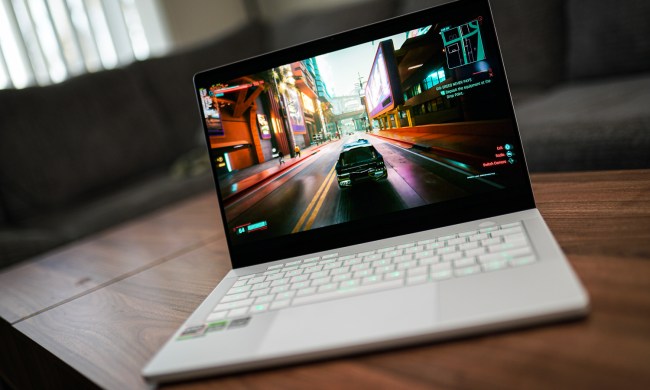AMD’s 500 series could be one of the worst kept secrets in hardware history, as we’ve had leak upon leak without much of an official announcement. Further adding to that mountain of evidence is a leak of several slides which appeared during a presentation AMD recently gave, detailing the benefits of the new generation and giving us an idea of its performance.
It was only a week or so ago that we saw a number of AMD’s 500 series graphics cards show up on various retailer websites, but it turns out the pre-release information leaks didn’t actually occur there. Originally posted by Japanese tech news site, Lazion, several slides have since been reproduced by Fudzilla, giving us a wealth of details about RX 580, 570, 560 and 550 graphics processors (GPU).
The first slide gives us some basic information about the 500 series, including the fact that it should deliver a more efficient experience, especially when idling. Aggressive tuning means higher clocks, we’re told, and there will be new options in partner designs — which could mean just about anything.
Moving on to card-specific slides, we learn that the Radeon RX 580 will come with 36 compute units (four less than Project Scorpio), will have 8GB of GDDR5 memory, and will have a base and boost clock of 1,257Mhz and 1,340Mhz, respectively.
Although the lack of GDDR5X memory might give Nvidia fans pause, the 580 doesn’t look like it’s designed to topple Nvidia’s Pascal generation cards. It’s in essence a rebranded version of the RX 400 series with more aggressive clocks. Its place in the graphics market seems likely to replace that of its predecessor, as in several benchmarks it’s shown outstripping both an R9 380X and Nvidia GTX 970 at 1440P resolution by substantial margins.
In the same way as the RX 480 was marketed as an affordable virtual reality capable graphics card, it seems like the 500 series, and specifically the RX 580, may be designed with 1440P gaming and prettier VR in mind.
Elsewhere in the 500 series range we have the 570, which comes with 32 compute units, 4GB of GDDR5 and a clock speed of 1,168Mhz which boosts up to 1,244Mhz. The 560 offers half as many compute units, but a slightly higher 1,175 Mhz/1,275Mhz clock speed and the same amount of memory.
The RX 550 has just eight compute units and a cited boost clock of 1,183Mhz paired with 2GB of memory. It is however said to be capable of 4K media decoding, so could be aimed at the HTPC crowd.
All cards have been optimized for DirectX 12 and Vulkan APIs, which AMD already had a bit of a lead over Nvidia with. It will be interesting to see how that plays out, considering these cards have some weaknesses in comparison to current-generation Nvidia GPUs.
Although we don’t know for sure, AMD’s 500 series cards are expected to launch as soon as April 18, so we don’t have long to wait to see how well these cards perform in the real world.




